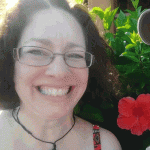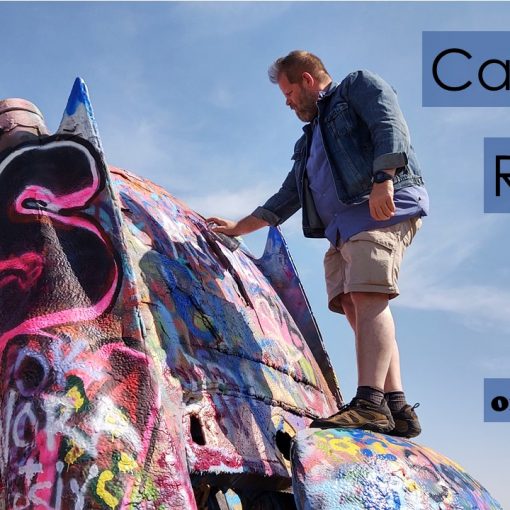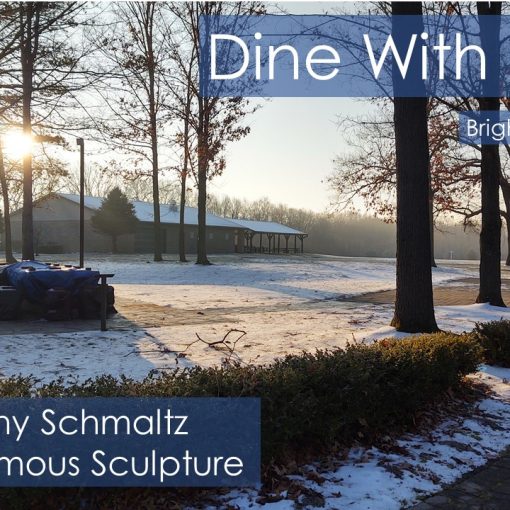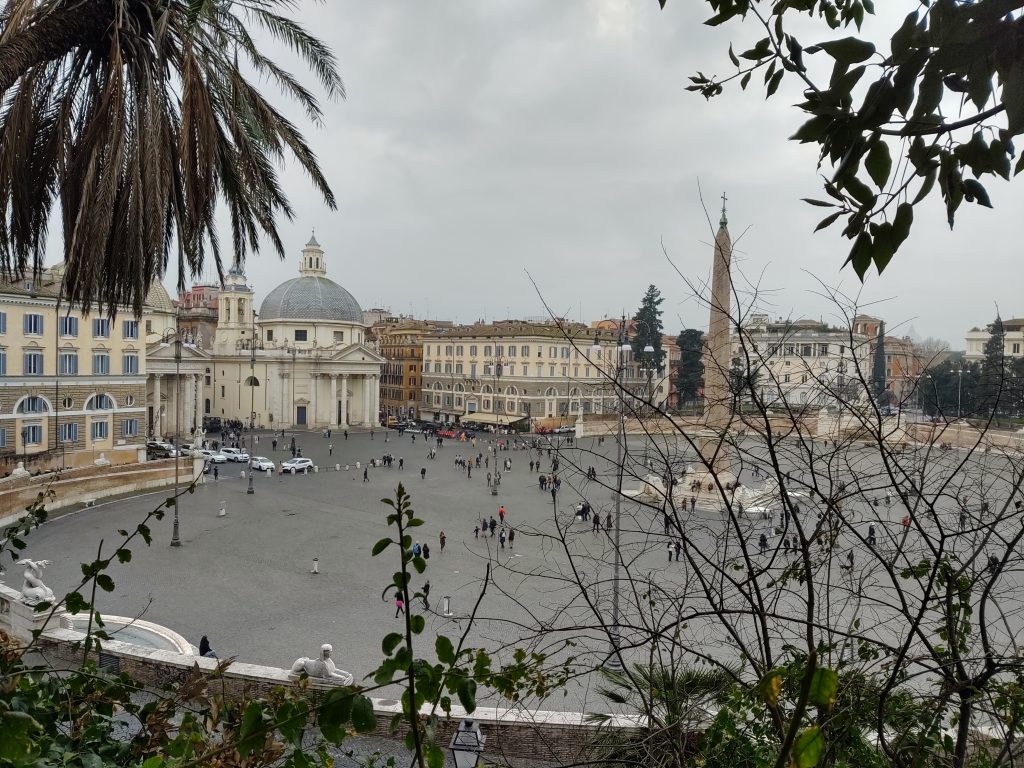
We walked to the Piazza del Popolo in Rome, Italy last February 2020. We had wanted to investigate Basilica Parrocchiale Santa Maria del Popolo located at the piazza. After perusing the church, we made our way into the center of the plaza. With scaffolding rising near an entrance we nearly missed a small banner announcing “Museo Leonardo da Vinci.” This was an unexpected find. . . A Leonardo di Vinci Museum!
My mind flew through the pages of “Monday With A Mad Genius” featuring Leonardo de Vinci as the main character. He was painting frescos and creating flying machines in the book. I had read this story to my second graders each year giving them a glimpse of this extraordinary man. Leonardo was an accomplished painter, sculptor, engineer and inventor.
My students really enjoyed “The Magic Tree House” series by Mary Pope Osborne. In this collection of stories, a brother and sister travel back in time via a magical treehouse. Each book takes youngsters to an array of eras.
Now it would be my turn to catch a first-hand glimpse into Leonardo’s vast skills and talents. I was giddy. Chuck was surprised when I passed right through the gift shop and straight to the artifacts on display. Don’t worry, I hit up the gift shop at the end.
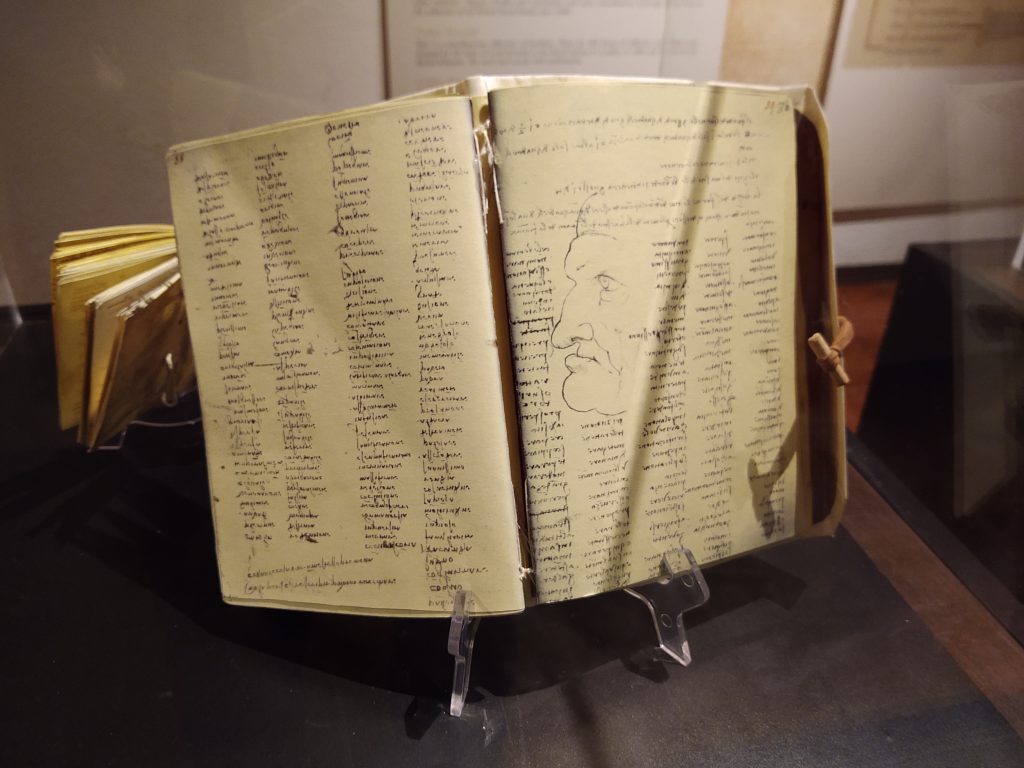
My excitement bubbled as we leaned over a case to see some of Leonardo’s original journals. His notes were meticulous with sketches placed within the text. I imagined that his brain must have been constantly churning with new ideas. He needed to pen them quickly, all the while his thoughts were so organized. I marvel at the genius of Leonardo di Vinci. He has impressed me for decades.
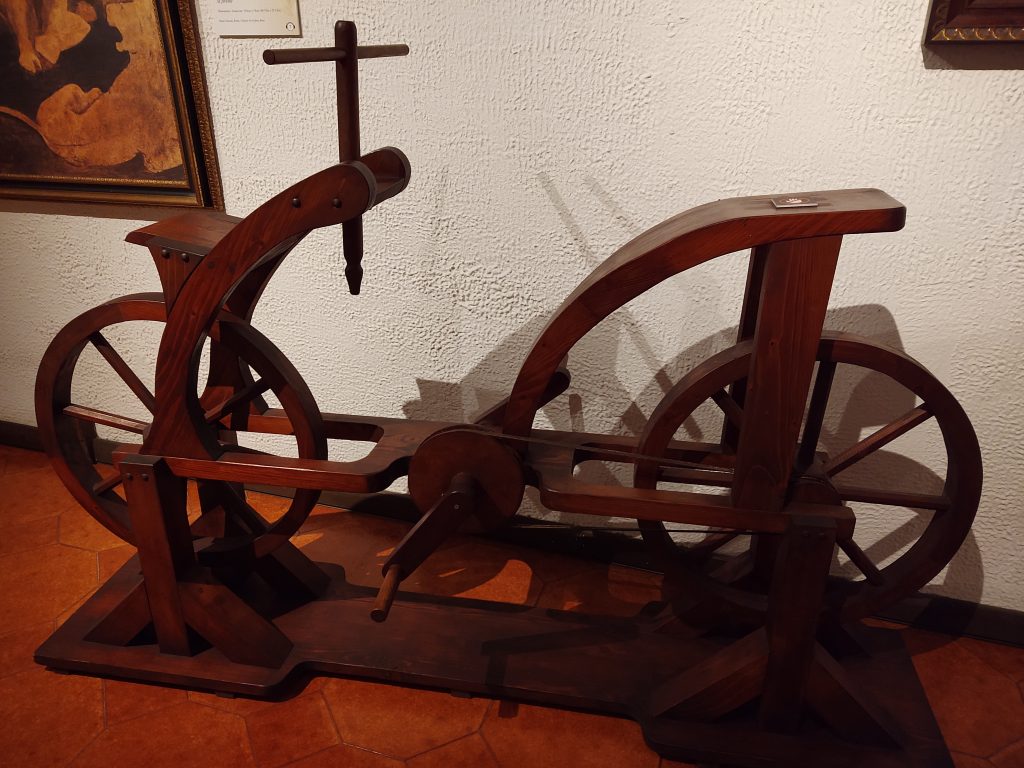
Using his precisely executed plans, reconstructed models of Leonardo’s inventions stood before us in room after room. We were dazzled by his ingenuity.
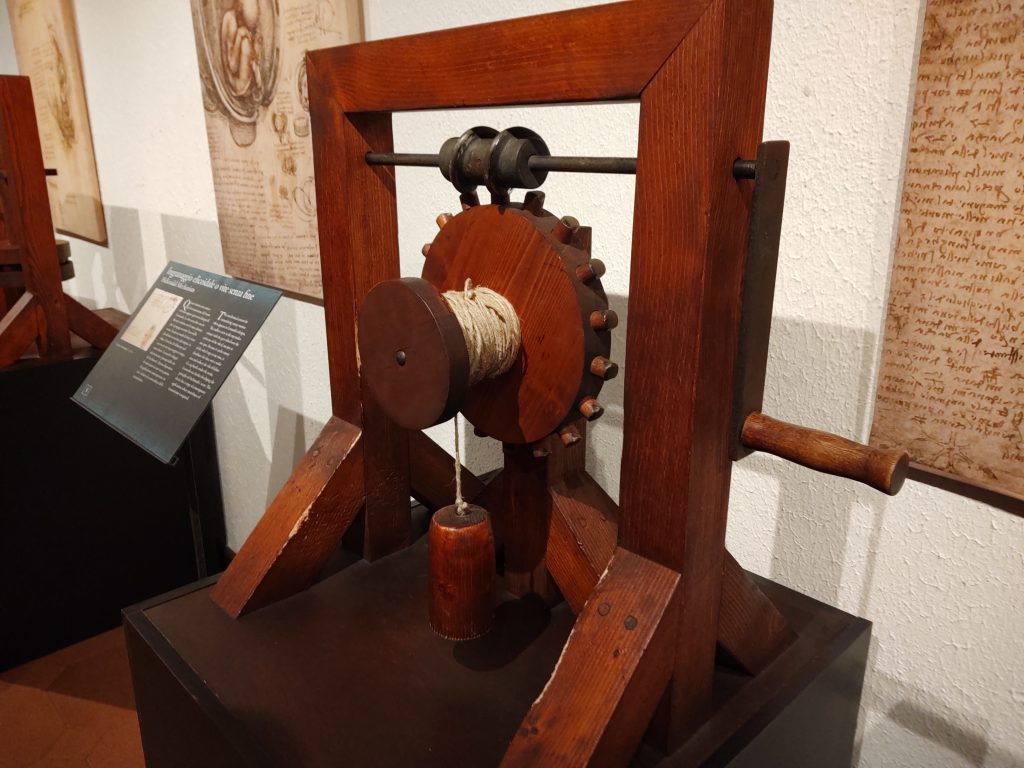
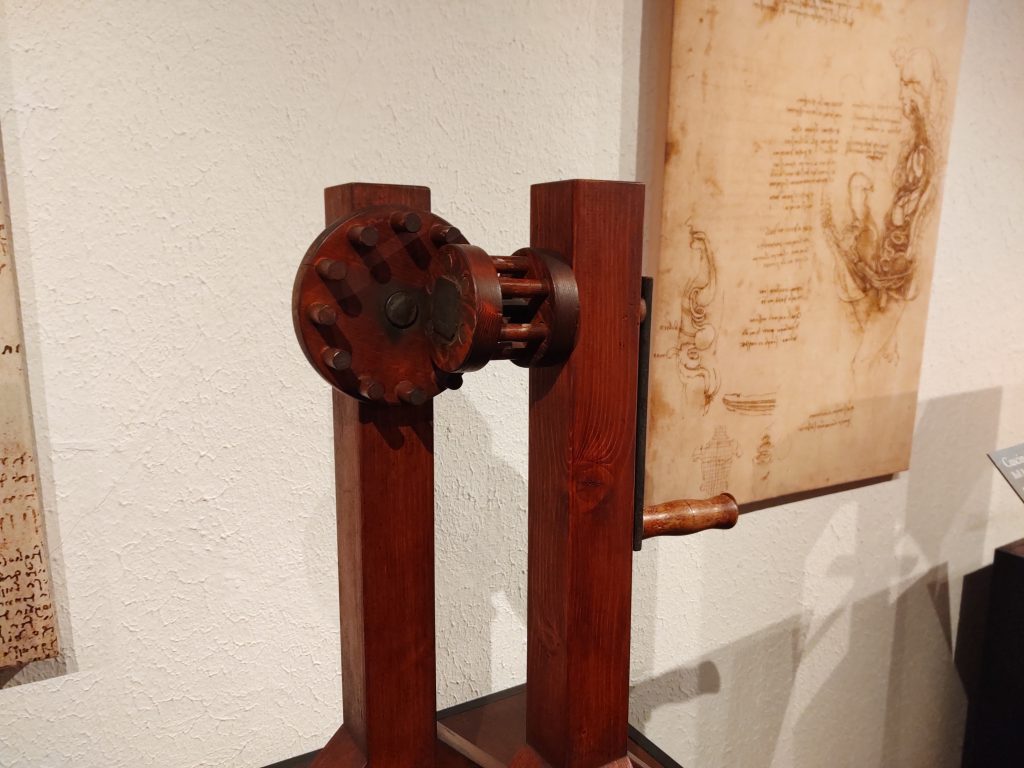
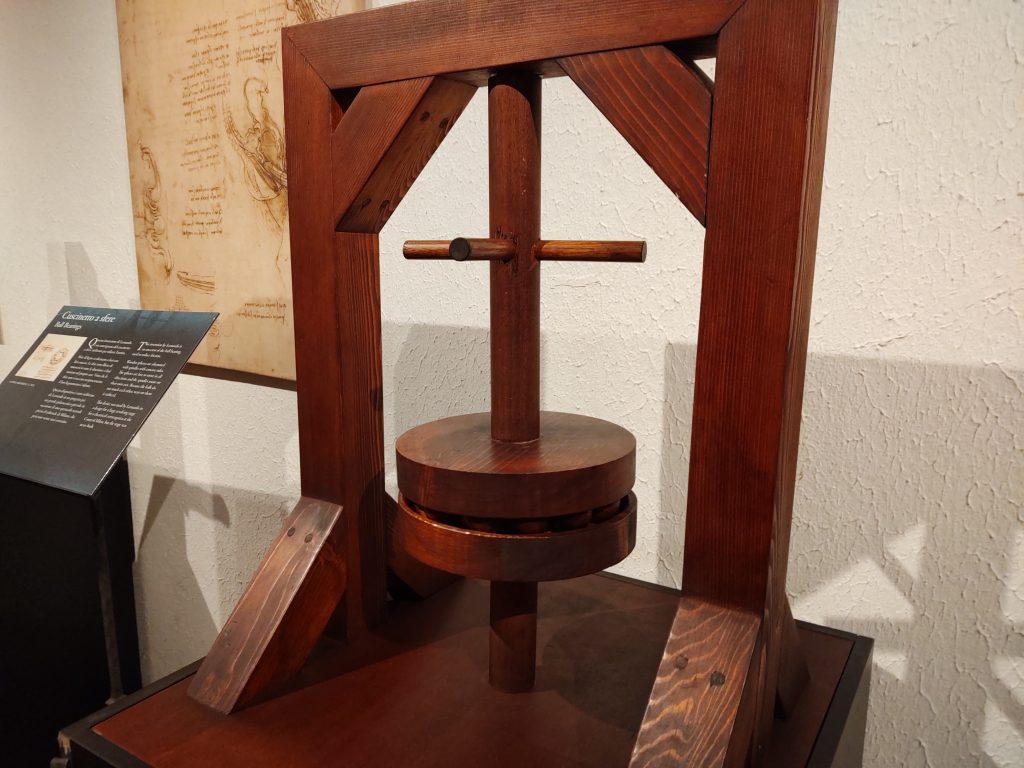
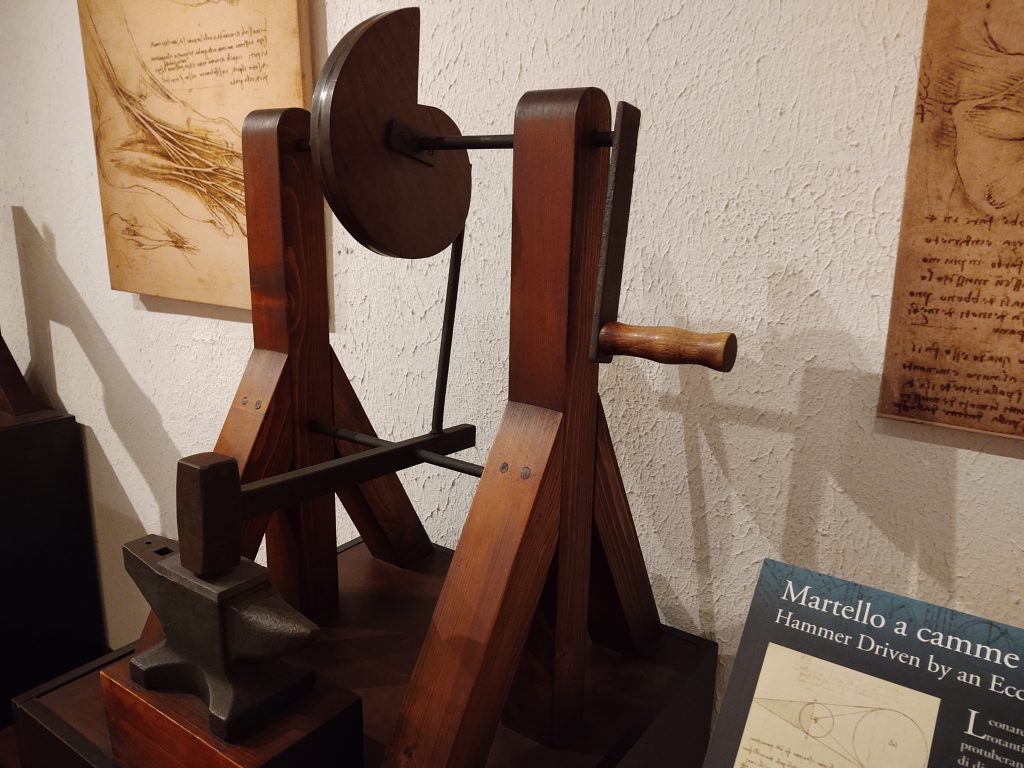
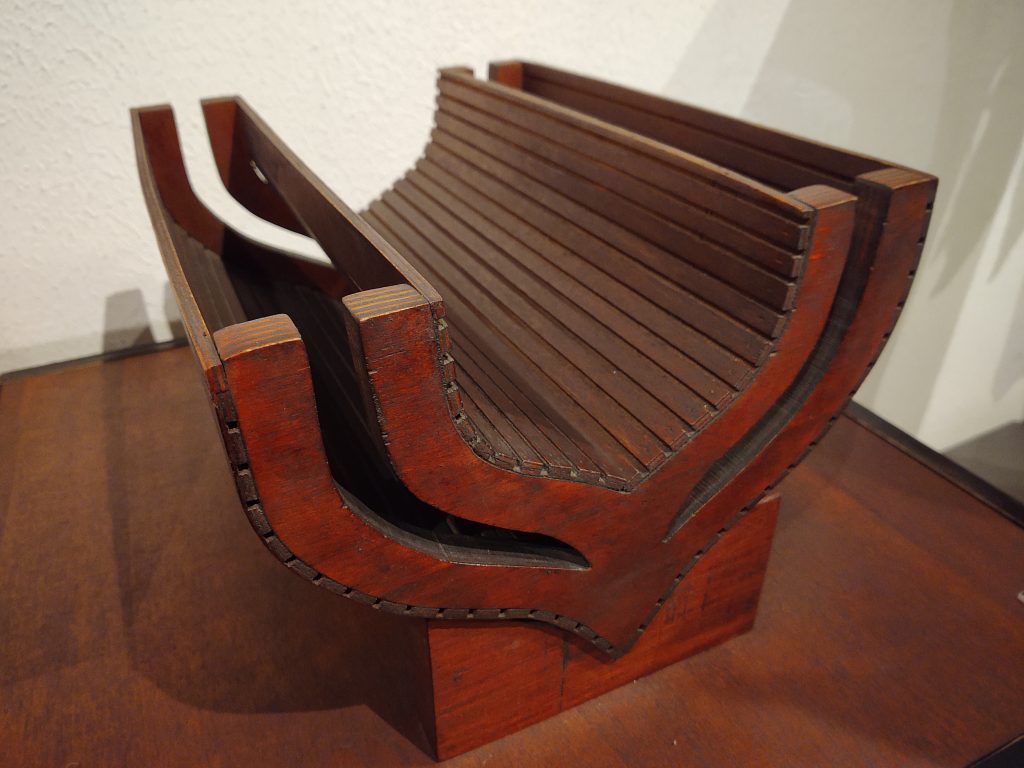
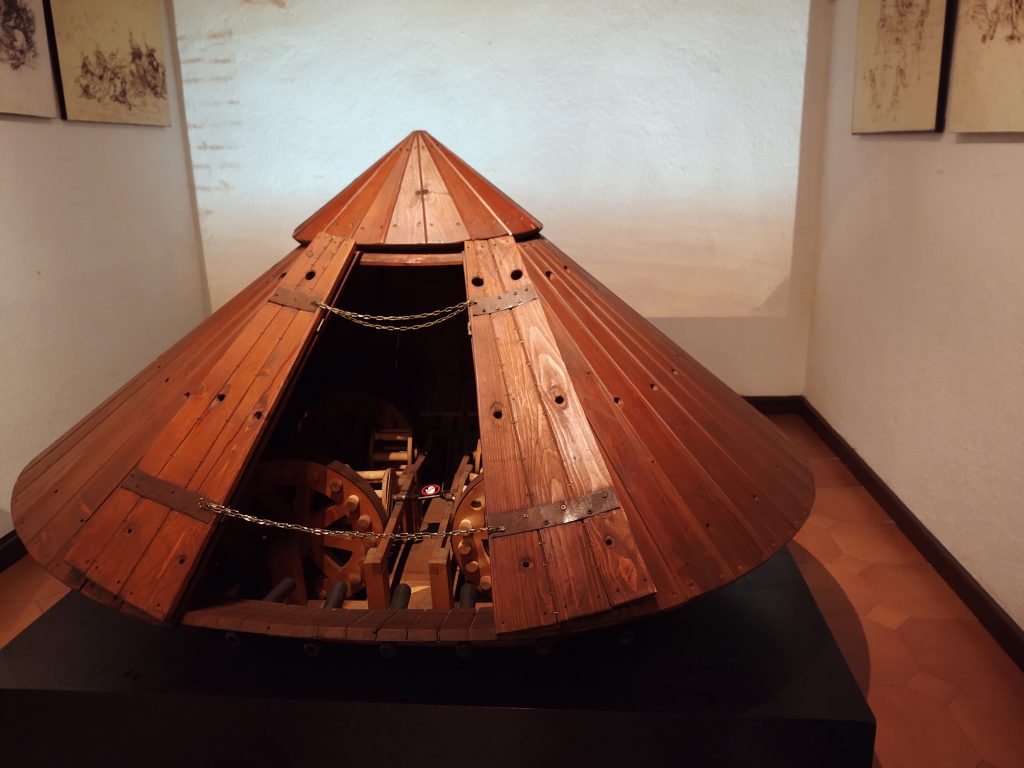
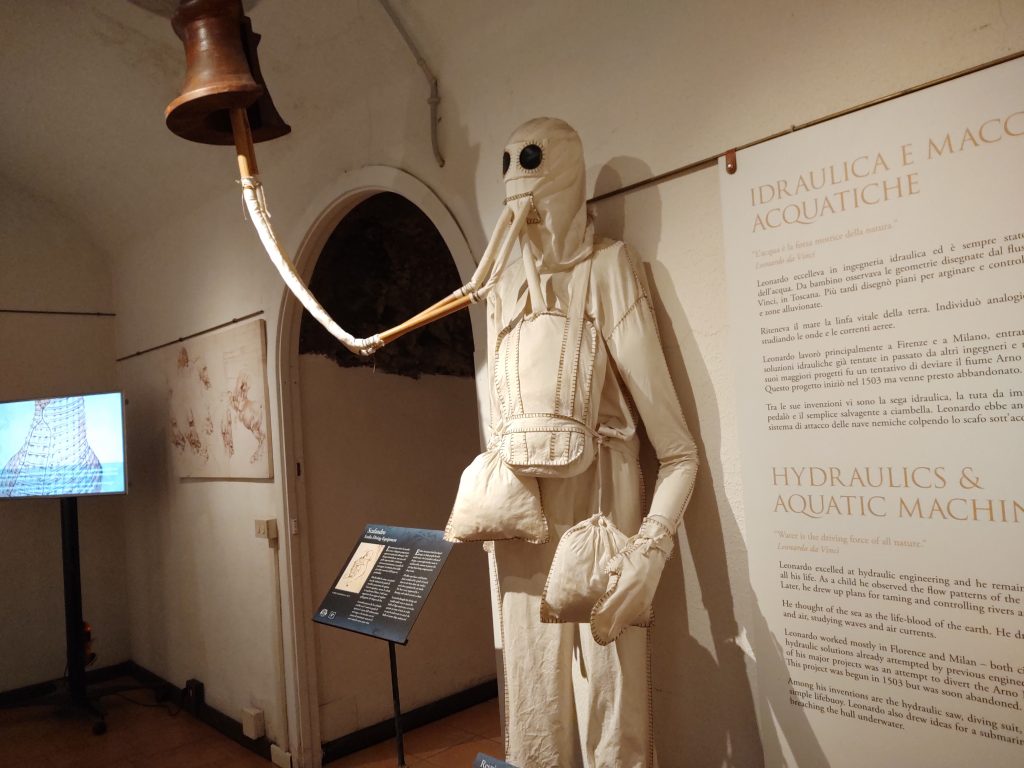
Looking back I wish I had caught more images with my camera, but at that time I was living in the moment. There were models of his flying inventions, too, as well as sculptures that I neglected to photograph.
Leonardo de ser Piero da Vinci was born in Italy on April 15, 1452. His first painting was “The Archangel Gabriel” which he completed when he was only 18 years old. He studied under Andrea Verrocchio in Florence until 1476. He continued to live in Florence until 1481.
Leonardo relocated to Milan for seventeen years (1482-1499). During his “Milan Phase” he completed six paintings including “The Last Supper” in 1495.
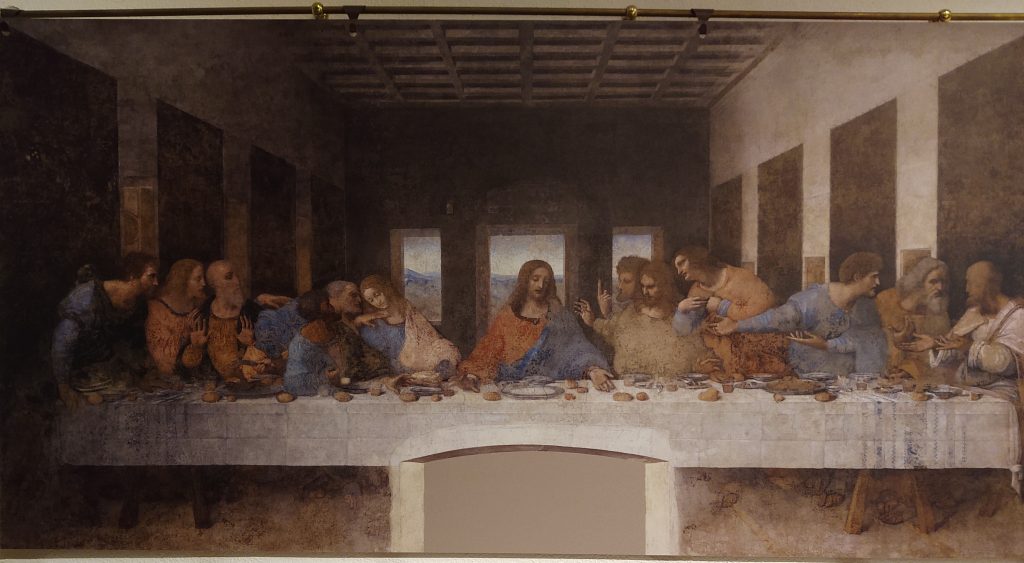
Leonardo de Vinci painted this piece in 1495 in Milan, Italy.
The replicas in the five room museum were well done and accessible. We were able to view them without restrictions. As we moved through the exhibits I also enjoyed hearing several different languages being spoken under the low ceilings.
In the late 1490’s Duke Ludovico il Moro commissioned Leonardo to cast a five meter bronze horse to honor his father, Francesco Sforza, the founder of the Sforza Dynasty who ruled over Milan, Italy. Leonardo studied the anatomy of a horse and created sketches.
France invaded Milan in 1499. Sadly, the horse sculpture was never completed during Leonardo’s lifetime. (Stay tuned for an article about Fred Meijer financing Nina Akamu to complete a statue modeled after Leonardo’s designs.) Leonardo fled to Florence (1500-1508) where he created the Mona Lisa portrait.
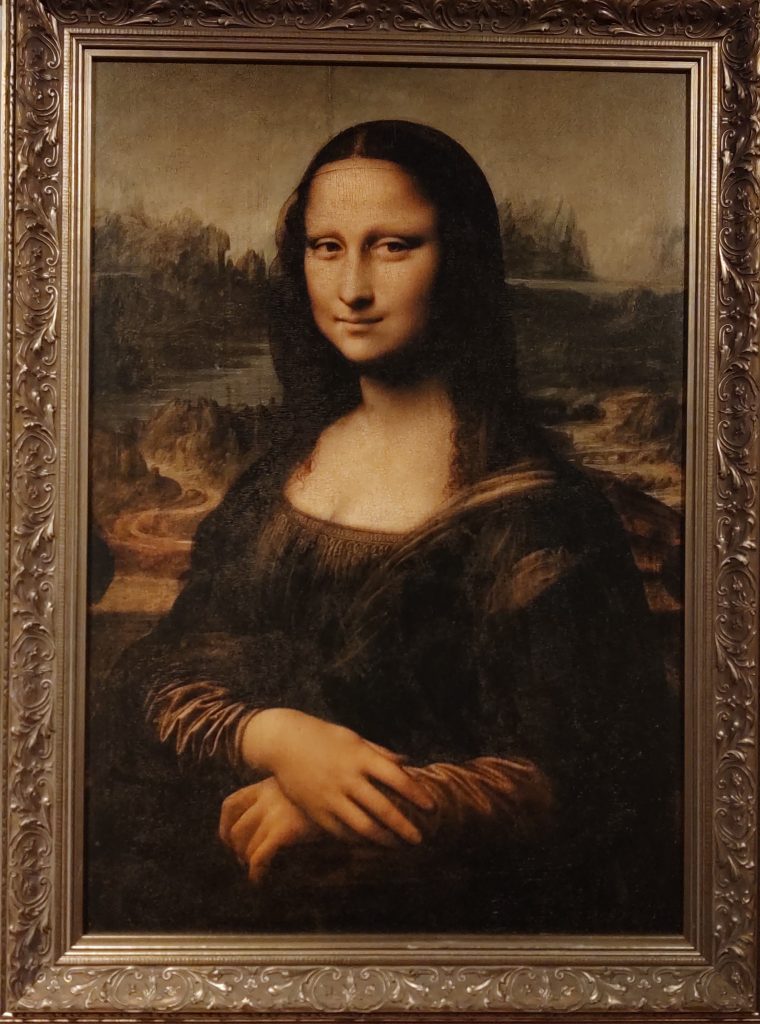
Leonardo painted this around 1503.
This stunning replica is on display at the Leonardo Museum in Rome.
Lisa Gherandini, a woman from Florence, modeled for this painting that took four years to complete.
There’s a mystery about who had commissioned the painting. Some believe Francesco del La Gioconda asked de Vinci to paint the portrait. In 1495, after being widowed twice, he wanted a painting of his new young bride. Others have speculated that Lisa was the mistress of Giuliano de Medici, the ruler of the Republic of Florence. Leonardo ended up in possession of this portrait which causes one to wonder about Lisa’s life. We will never know exactly who this mysterious Lisa was.
(Stay tuned for an article about “The Mona Lisa.” Leonardo’s masterpiece is on display at the Louvre Museum in Paris. Some have said it’s been at the Louvre since 1797, others 1804 and yet one other site said 1815.)
We studied the small painting up close and photographed it. Later we learned that at The Louvre Museum in Paris, France people wait for hours in a special line just to see the Mona Lisa. Then, tourists are permitted thirty seconds to view the masterpiece from a distance through bullet proof glass. I feel so fortunate to have seen a well-done replica of this masterpiece up close!
In 1508 Leonardo returned to Milan and worked under the French rulers. He focused on scientific studies and anatomy. He was treated well by the French.
In 1513 the French were forced out of Milan. French King Frances offered 65 year old Leonardo di Vinci the title of First Painter, Architect and Engineer to the King. Leonardo gladly accepted the position and moved to France.
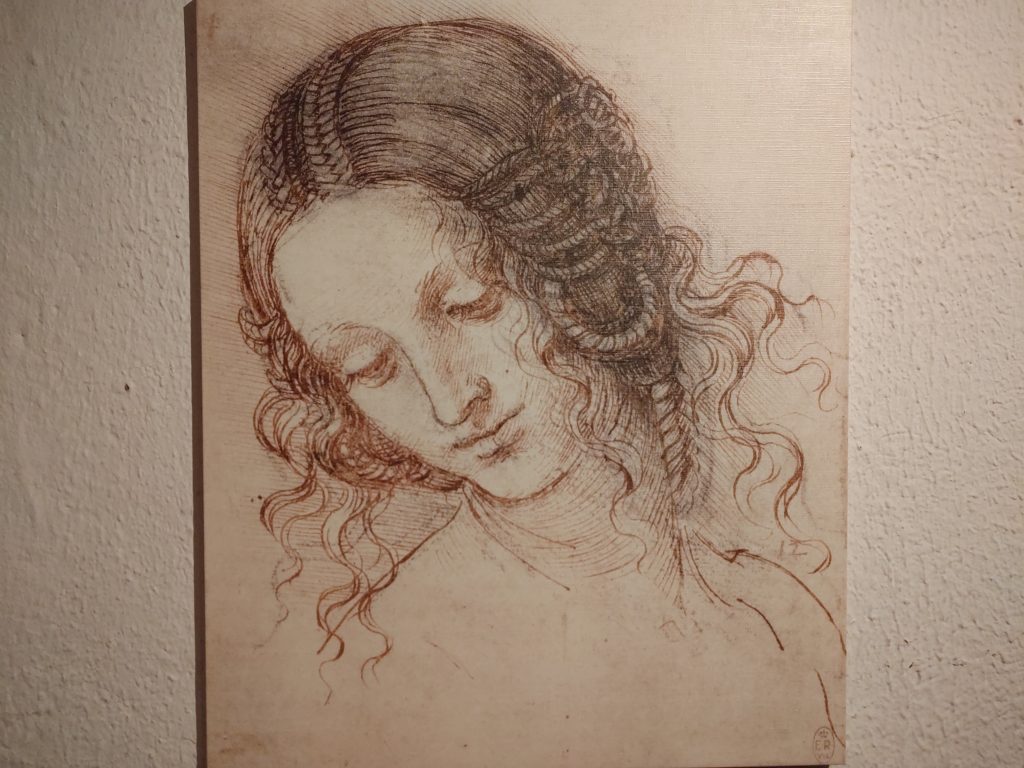
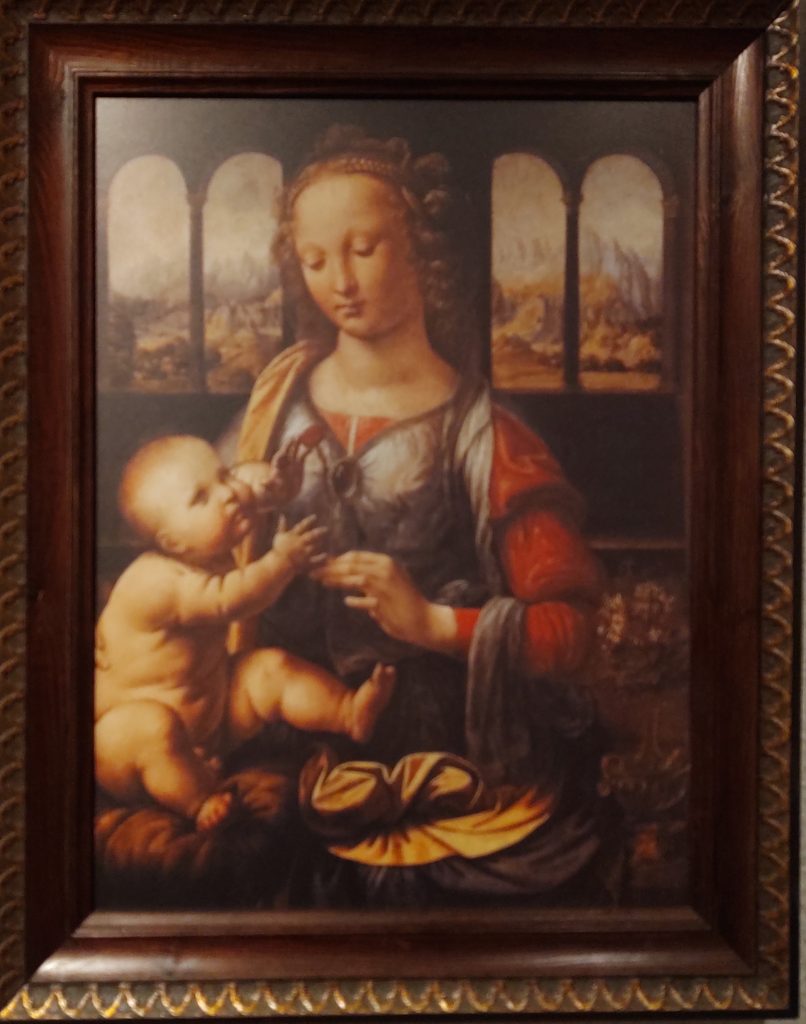
On May 2, 1519 Leonardo drew his last breath in Cloux, France. He has left a legacy of inventions that have changed the work of the world. His paintings and sculptures have been studied for centuries and continue to be a fascinating. He was a true Renaissance man with his varied skill set and creative thinking.
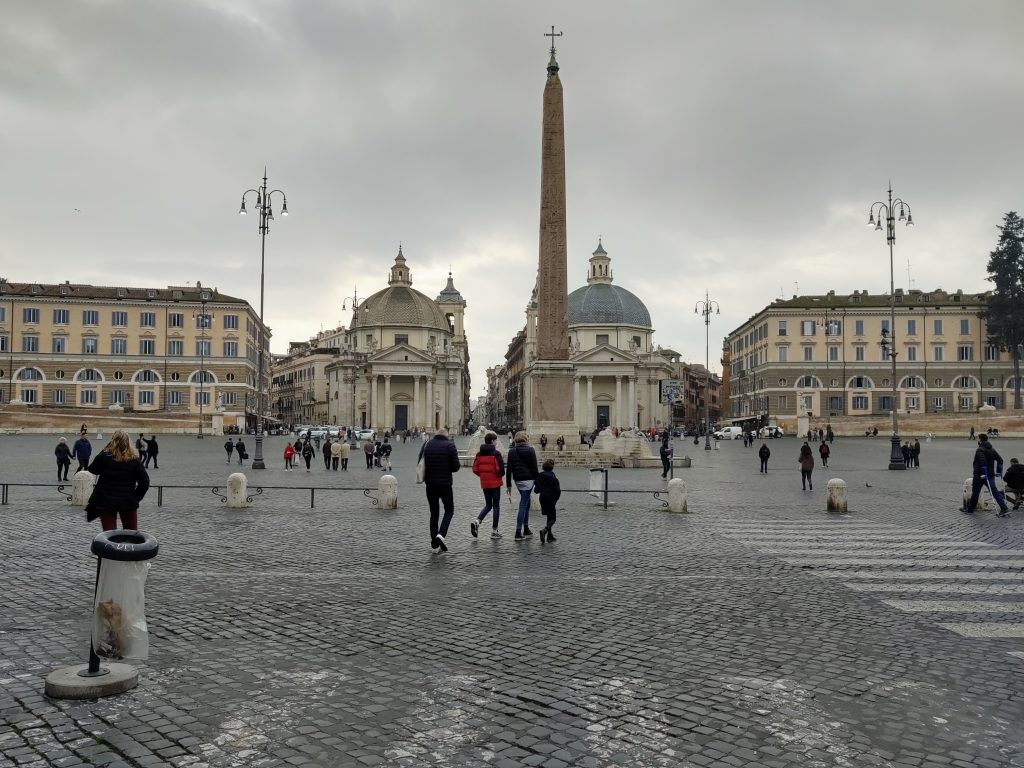
observed people and the birds at Piazza del Poplo.
Happening upon this Leonardo di Vinci display was a favorite memory from our trip to Europe. When researching this from home I noticed several people reported negative reviews of this particular museum. “It was too small and cramped.” “It was too hot.” “There are only five rooms.” However, I found this museum extraordinarily engaging, completely charming and full of easily accessed replicas and models. This secret museum was a fantastic find!
Resources:
“Monday with a Made Genius” by Mary Pope Osborne
https://www.leonardodavinci.net/the-monalisa.jsphttps://www.leonardodavinci.net/the-mona-lisa.jsp
https://www.pariscityvision.com/en/paris/museums/louvre-museum/the-mona-lisa-history-and-mysteryhttps://www.pariscityvision.com/en/paris/museums/louvre-museum/the-mona-lisa-history-and-mystery

